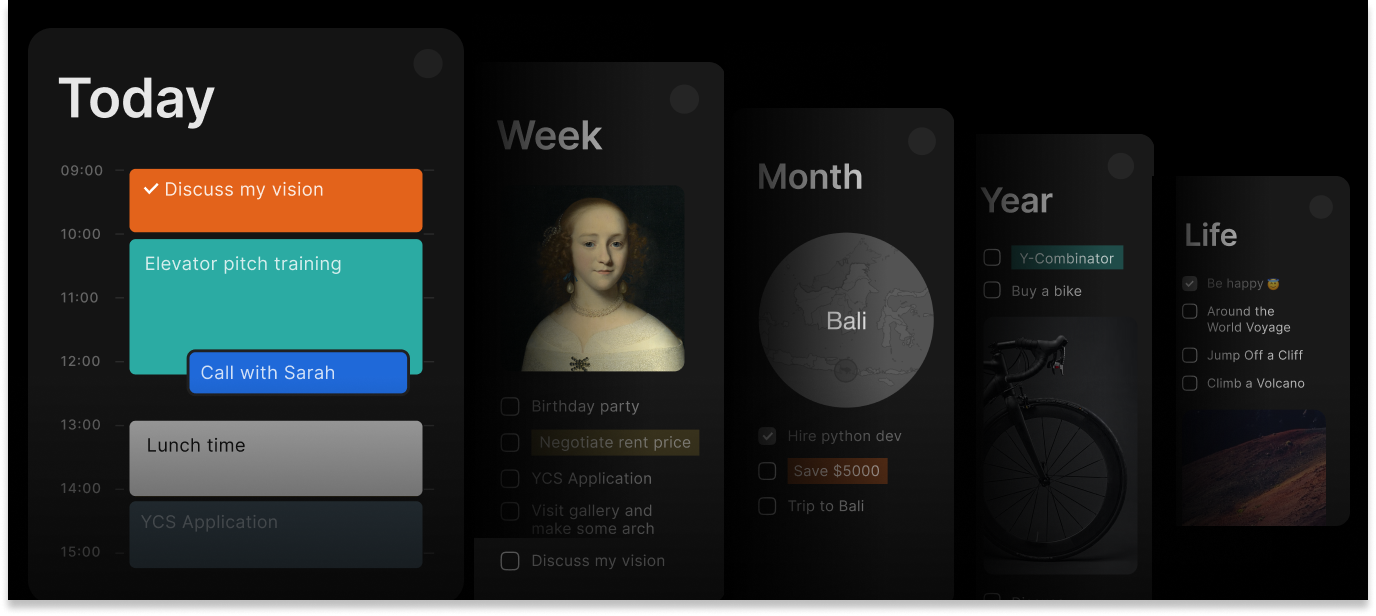How to Increase Team Productivity: 8 Proven Strategies

In today’s fast-paced business environment, maximizing collective output is the defining factor between high-growth companies and those struggling to scale. True efficiency isn’t just about working harder; it’s about strategic alignment. To improve team productivity, leaders must move beyond basic task-tracking and embrace systematic workflows. By integrating professional team productivity tools with a clear cultural framework, organizations can transform fragmented efforts into a unified engine for success. In this guide, we’ll explore how to track progress using modern software solutions and, more importantly, how to foster an environment where high performance becomes the default.
What Team Productivity Really Means and Why It’s Worth Caring About
Think of team productivity as the sweet spot where everyone’s individual talents come together to create something bigger than the sum of its parts. It’s not just about checking boxes or hitting deadlines—though those matter too. It’s about how smoothly your team flows from idea to execution, how naturally people collaborate, and how efficiently problems get solved.
Here’s the thing: when teams really click, magic happens. They don’t just meet their goals—they often exceed them while making it look effortless. These high-performing groups become innovation engines, adapting to changes faster than their competitors and creating work environments where talented people actually want to stick around.
The numbers back this up too. Teams that have their act together consistently outperform others in revenue generation, keep their best people longer, and bounce back from setbacks more quickly. When one team starts operating at this level, it tends to inspire others across the organization, creating a positive cycle that benefits everyone.

Boost your team's performance
Track productivity metrics and optimize workflows in Timestripe
Get Started8 Proven Strategies to Increase Team Productivity in 2026
1. Getting Crystal Clear on Goals and What Matters Most
Without clear direction, even the most talented team can end up spinning their wheels. It’s like having a group of expert drivers trying to win a race without knowing where the finish line is. Smart team productivity tools usually include frameworks for setting goals that actually make sense—specific enough to guide daily decisions, measurable enough to track progress, and realistic enough to keep everyone motivated.
The best teams don’t just set goals once and forget about them. They regularly check in, adjust priorities when needed, and break big scary projects into bite-sized pieces that don’t overwhelm anyone. This keeps everyone focused on work that actually moves the needle rather than just staying busy.
2. Making Communication Work for Everyone
Communication breakdowns are productivity killers. When people aren’t on the same page, you end up with duplicated work, missed opportunities, and frustrated team members. Teams that really improve team productivity invest time in figuring out how to share information effectively and keep everyone in the loop.
The trick isn’t to communicate more—it’s to communicate better. Some conversations need to happen face-to-face, while others work perfectly fine over chat or email. The key is matching the medium to the message and making sure important information doesn’t get lost in the shuffle.
3. Streamlining How Work Gets Done
Every team has processes, whether they’re written down or just “how things have always been done.” The productive ones regularly take a step back and ask: “Is there a better way to do this?” Sometimes that means cutting out unnecessary steps, automating repetitive tasks, or reorganizing workflows to eliminate bottlenecks. A good team productivity app can help spot these inefficiencies by showing where time actually goes.
The best insights often come from the people doing the work every day. They see the friction points that might not be obvious from a management perspective. Creating a culture where everyone feels comfortable suggesting improvements leads to continuous optimization.
4. Creating Spaces That Actually Help People Work
Environment matters more than most people realize. The right workspace—whether physical or digital—can make the difference between feeling energized and focused versus drained and distracted. This includes the basics like:
- Lighting that doesn’t cause eye strain
- Comfortable seating that supports good posture
- Quiet zones for deep work
- Open areas for collaboration
- Access to the tools people actually need
For remote and hybrid teams, the concept of workspace extends to home offices and digital collaboration platforms. Team productivity software becomes crucial for creating virtual environments that support effective teamwork regardless of location.
5. Keeping People Motivated and Engaged
Motivated team members don’t just work harder—they work smarter. They bring creative solutions to problems, take initiative on improvements, and help create positive energy that spreads throughout the team. The key is understanding that motivation isn’t one-size-fits-all.
Some people light up with public recognition, while others prefer quiet appreciation. Some thrive on new challenges, while others find satisfaction in mastering their current role. A team productivity tracker can help identify what drives different team members, enabling more personalized approaches to motivation.
6. Investing in People’s Growth
Teams that prioritize learning and development don’t just perform better today—they stay competitive tomorrow. This investment takes many forms:
- Training on new tools and technologies
- Development of collaboration and communication skills
- Leadership preparation for emerging leaders
- Cross-training to increase team flexibility
- External learning opportunities
Team productivity apps often integrate with learning platforms, making it easier for people to access development resources and track their progress without adding administrative burden. Or you can use Timestripe Boards as a tool for knowledge storage and sharing.
7. Measuring What Matters
What gets measured gets managed, but the key is measuring the right things. Teams need visibility into their performance to celebrate wins, identify trends, and address challenges before they become bigger problems. The metrics should connect to actual team goals and provide insights that lead to action.
The best performance reviews look at both the numbers and the story behind them. Understanding not just what the team accomplished but how they did it helps identify patterns and opportunities for improvement. A solid team productivity solution provides analytics that turn data into actionable insights.
8. Clearing Common Roadblocks
Several predictable obstacles tend to derail team productivity. Recognizing and addressing these early prevents bigger problems:
Meeting Overload: Too many meetings kill productivity. Regular audits of meeting schedules often reveal opportunities to eliminate or streamline gatherings that don’t add real value.
Multitasking Myths: Despite popular belief, juggling multiple tasks usually reduces overall quality and efficiency. Encouraging focused work on single priorities often yields better results. More on this topic read here.
Fuzzy Expectations: When people don’t understand what’s expected of them, confusion follows. Regular clarification of roles and deliverables prevents misunderstandings.
Technology Headaches: Tools should make work easier, not harder. Regular evaluation of the technology stack ensures that team productivity tools actually enhance rather than complicate workflows.
Micromanagement: Excessive oversight stifles creativity and job satisfaction. Empowering team members to make decisions within their expertise areas often leads to better outcomes and higher engagement.
Using Timestripe for Measuring and Tracking Productivity
Timestripe represents a comprehensive team collaboration and productivity software solution that addresses many of the challenges teams face in managing their productivity. The platform combines project management, time tracking, and team collaboration features in an intuitive interface that supports both individual and team productivity.
The team productivity tool offers several key features that help teams increase team productivity:
Visual Timeline Management: Timestripe’s unique timeline approach allows teams to visualize their projects and deadlines in a clear, intuitive format. This visual representation helps team members understand project dependencies and manage their time more effectively.
Integrated Time Tracking: The platform’s time tracking capabilities provide detailed insights into how to track team productivity by monitoring actual time spent on various tasks and projects. This data helps teams identify productivity patterns and optimize their workflows.
Collaborative Planning: Teams can collaboratively plan projects, assign tasks, and track progress in real-time. The platform’s collaborative features ensure that all team members stay informed about project status and can contribute effectively to team goals.
Performance Analytics: Timestripe provides comprehensive analytics that help teams understand their productivity patterns and identify areas for improvement. These insights enable data-driven decision-making and continuous optimization.
Goal Setting and Tracking: The platform supports goal-setting frameworks that help teams establish clear objectives and track progress toward achievement. This feature ensures that daily activities align with broader organizational goals.
Resource Management: Teams can effectively manage their resources, including team member availability, project budgets, and deadline management. This comprehensive approach helps prevent overallocation and ensures realistic project planning.
As a team productivity tracker, Timestripe provides the visibility and insights teams need to continuously improve their performance while maintaining focus on their most important objectives.
Key Takeaways and Next Steps
Increasing team productivity requires a holistic approach that addresses multiple factors simultaneously. Success depends on clear goal-setting, effective communication, optimized processes, and the right tools to support these efforts. The investment in team productivity software like Timestripe can provide the foundation for sustained improvement by offering the visibility, collaboration features, and analytics needed to drive continuous optimization.
The journey to how to improve team productivity is ongoing, requiring regular assessment, adjustment, and commitment from all team members. Organizations that prioritize team productivity create competitive advantages that extend far beyond immediate output improvements.
Ready to transform your team’s productivity? Try Timestripe today and discover how our comprehensive platform can help your team achieve new levels of efficiency and collaboration. Start your free trial and experience the difference that purpose-built productivity tools can make for your team’s success.
Read next



